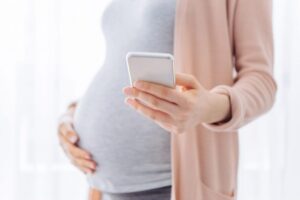 The cost of fertility treatment can be a barrier between patients and their plans for a family. The INVOcell, a recently FDA approved gas permeable vaginal culture device, allows women to incubate eggs and sperm themselves, decreasing the cost of and increasing access to fertility treatment. Atlantic Reproductive is happy to be the first practice in the Raleigh area to offer intravaginal culture with INVOcell in the hope that this treatment will allow more patients to afford fertility care.
The cost of fertility treatment can be a barrier between patients and their plans for a family. The INVOcell, a recently FDA approved gas permeable vaginal culture device, allows women to incubate eggs and sperm themselves, decreasing the cost of and increasing access to fertility treatment. Atlantic Reproductive is happy to be the first practice in the Raleigh area to offer intravaginal culture with INVOcell in the hope that this treatment will allow more patients to afford fertility care.INVOcell: A New Option That May Provide Cost Savings for Patients Seeking Fertility Treatment
Atlantic Reproductive Medicine Specialists wants you to “Listen Up!” when it comes to issues around infertility. Building awareness can help empowered you as you move along the family building journey. The cost of fertility treatment can be a barrier between patients and their plans for a family. The INVOcell, a recently FDA approved gas permeable vaginal culture device, allows women to incubate eggs and sperm themselves, decreasing the cost of and increasing access to fertility treatment. Atlantic Reproductive is happy to be the first practice in the Raleigh area to offer intravaginal culture with INVOcell in the hope that this treatment will allow more patients to afford fertility care.
The cost of fertility treatment can be a barrier between patients and their plans for a family. The INVOcell, a recently FDA approved gas permeable vaginal culture device, allows women to incubate eggs and sperm themselves, decreasing the cost of and increasing access to fertility treatment. Atlantic Reproductive is happy to be the first practice in the Raleigh area to offer intravaginal culture with INVOcell in the hope that this treatment will allow more patients to afford fertility care.
 The cost of fertility treatment can be a barrier between patients and their plans for a family. The INVOcell, a recently FDA approved gas permeable vaginal culture device, allows women to incubate eggs and sperm themselves, decreasing the cost of and increasing access to fertility treatment. Atlantic Reproductive is happy to be the first practice in the Raleigh area to offer intravaginal culture with INVOcell in the hope that this treatment will allow more patients to afford fertility care.
The cost of fertility treatment can be a barrier between patients and their plans for a family. The INVOcell, a recently FDA approved gas permeable vaginal culture device, allows women to incubate eggs and sperm themselves, decreasing the cost of and increasing access to fertility treatment. Atlantic Reproductive is happy to be the first practice in the Raleigh area to offer intravaginal culture with INVOcell in the hope that this treatment will allow more patients to afford fertility care.Suggested for you
Subscribe to stay in the loop
Our newsletter delivers expert insights, practical benefit strategies, heart warming member
moments, and the latest in fertility and family-building news straight to your inbox.



